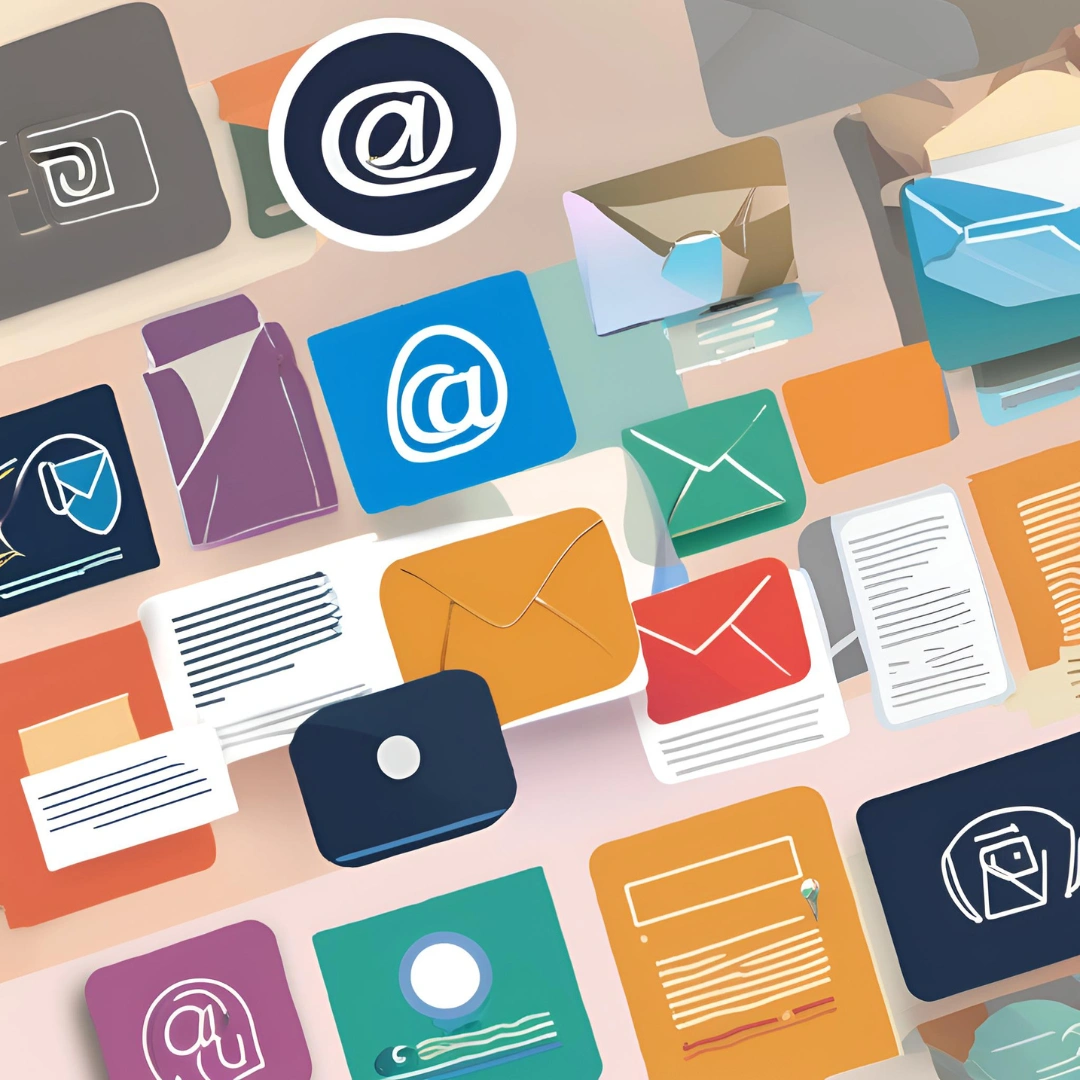In the expansive realm of digital interactions, email stands out as a profoundly influential tool. Starting as a modest concept in the early stages of the internet, it has since become an integral part of our daily routines. Email has revolutionized the way we exchange information, operate businesses, and navigate our personal affairs. This article delves into the captivating history, remarkable growth, and enduring significance of email, shedding light on both its advantages and challenges in the contemporary landscape.
The Birth of Email
In the early 1970s, the concept of email emerged, with Ray Tomlinson widely recognized as its pioneer. While working on the ARPANET, the forerunner to today's internet, Tomlinson developed a system enabling users to send messages across different computers. He introduced the "@" symbol to differentiate between the person and the device, a convention that continues to be the norm even now.
The initial intent behind email was straightforward: to enable efficient communication among researchers and scholars. It offered a quick, casual way to exchange messages, minimizing the necessity for formal correspondence. As the ARPANET expanded and more organizations joined the network, email's appeal continued to rise.
Email in the 1980s and 1990s: Expansion and Commercialization
In the 1980s, email expanded beyond academic and research settings. The arrival of personal computers and the growth of commercial networks like CompuServe and AOL made email accessible to a wider population. This time saw several significant advancements:
-
User Interfaces: As technology advanced, email transitioned from a text-driven format, where users needed specialized knowledge to navigate it, into a more user-friendly experience. The rise of graphical user interfaces (GUIs) paved the way for email clients like Eudora and Microsoft Mail, which made email accessible to a wider audience, including those without extensive technical expertise.
-
Protocols and Standards: Consistent communication protocols, like SMTP, POP, and IMAP, enabled diverse email platforms to seamlessly exchange messages. This harmonized approach was vital for email to become widely accepted and used across the globe.
-
Commercial Use: Embracing the digital age, businesses discovered the remarkable potential of email. This newfound communication tool streamlined internal operations and enhanced customer interactions. The swift and effective exchange of messages transformed standard business practices, paving the way for the creation of comprehensive email platforms tailored for organizational needs.
The Rise of Web-Based Email
The mid-1990s saw a significant shift with the advent of web-based email services. Hotmail, launched in 1996, was one of the first free webmail services, allowing users to access their email from any internet-connected device. This innovation democratized email, making it accessible to millions of people worldwide. Web-based email eliminated the need for dedicated email software, further simplifying the user experience.
Email in the 21st Century: Dominance and Challenges
In the modern era, email has become an integral part of our daily lives. It is estimated that more than 4 billion individuals utilize email, with countless messages exchanged every day. Despite the emergence of novel communication channels, such as social media and instant messaging, email continues to serve as a fundamental component of digital interaction. Nonetheless, this widespread adoption has also given rise to various challenges:
-
Spam and Security: The unprotected nature of electronic messaging leaves it vulnerable to unwanted advertisements and fraudulent attempts. Across time, substantial work has gone into countering these problems, such as designing sophisticated junk mail blockers and security systems. Yet, securing email continues to be an ongoing struggle.
-
Information Overload: Dealing with the endless flood of emails that fill our inboxes each day can be a daunting task. The relentless stream of messages can quickly become unmanageable, causing strain and hindering our efficiency. To combat this challenge, various techniques and tools have been created, including inbox zero and priority-based sorting, designed to help us regain control over our digital communications.
-
Privacy Concerns: The possibility of email being intercepted or accessed by unauthorized individuals prompts major worries about privacy. Techniques like end-to-end encryption and other security methods have been put in place to safeguard users' private information, yet concerns continue to exist.
The Benefits of Email
Despite these challenges, the benefits of email are undeniable. It offers several advantages that have cemented its place as a vital communication tool:
-
Asynchronous Communication: Email offers an alternative to real-time interactions like phone calls or in-person meetings. It enables asynchronous communication, allowing recipients to access and reply to messages when it suits them best. This flexibility caters to diverse time zones and schedules, unlike the synchronous nature of other modes of communication.
-
Documentation and Record-Keeping: Email leaves a written trail of exchanges, offering a reliable record that can be referred to when needed, especially in professional and legal matters. This written documentation proves invaluable for accountability and record-keeping purposes.
-
Global Reach: Email is a powerful way to connect with others around the globe, instantly. It's a vital instrument for conducting business internationally and maintaining personal relationships worldwide.
-
Versatility: Email is a remarkably flexible tool that can handle an assortment of tasks, from formal business discussions to informal personal chats. This versatility allows email to cater to almost any communication requirement.
The Integration of Email with Modern Tools
In our modern, interconnected world, email is no longer a standalone tool. Instead, it seamlessly integrates with various digital platforms, expanding its capabilities and relevance. For instance, email can now be combined with other digital applications, enabling users to leverage its functionality in more versatile and impactful ways.
-
Project Management Software: Project management tools like Asana, Trello, and Monday.com simplify workflow by seamlessly integrating email. Users can conveniently create tasks, update project progress, and collaborate with team members, all within a single platform, eliminating the need to toggle between different applications.
-
Customer Relationship Management (CRM) Systems: Integrating email with customer relationship management (CRM) platforms, such as Salesforce and HubSpot, empowers businesses to monitor customer interactions, handle leads, and automatize marketing efforts. This connection provides a complete understanding of customer relationships, enhancing sales performance and customer support effectiveness.
-
Collaboration Tools: Messaging apps like Slack and Microsoft Teams offer email-like features to enhance communication. Users can send emails directly to these platforms, share information, and engage in discussions within a more collaborative setting.
-
Calendar Integration: Calendar functions are integrated into email services like Gmail and Outlook, enabling users to plan meetings, create reminders, and improve time management. Attending and planning events is made easier by this connection.
Conclusion
Since its inception in the early days of the internet, email has seen significant development. It has developed from a specialized tool for scholars to a billion people's global platform for communication. Email is still a vital component of both our personal and professional life, despite its difficulties. Its capacity to enable prompt, asynchronous communication, offer a trustworthy correspondence record, and link individuals worldwide guarantees that it will maintain its pivotal function in the era of digitalization.





Leave a Reply